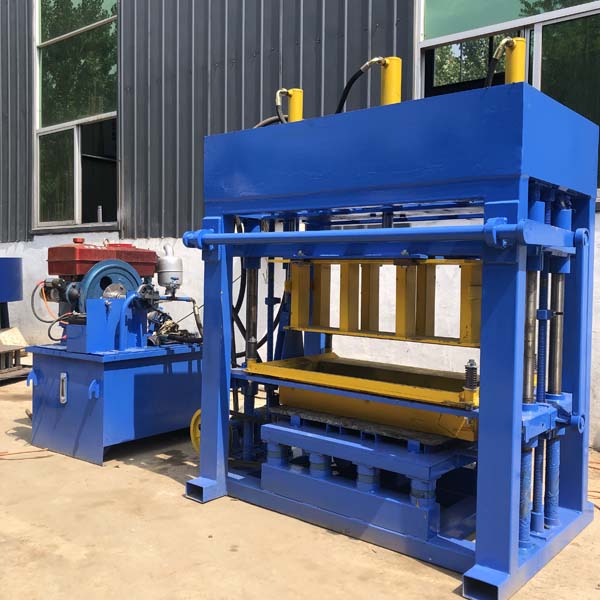
The brick-making industry has come a long way since its inception, with technology playing a pivotal role in revolutionizing the manufacturing process.
Traditional brick-making methods were labor-intensive and time-consuming, leading to inefficiencies in production.
However, with advancements in engineering and automation, modern brick making machines have emerged as the driving force behind efficient and cost-effective brick production.
This essay explores the significance of advanced brick making machines in enhancing production efficiency, the key features that set them apart, and their impact on the construction industry.
The Evolution of Brick Making Machines
Brick making dates back to ancient civilizations, where the process involved hand-molding clay or other materials into rectangular shapes and then firing them in kilns.
The Industrial Revolution marked the beginning of mechanization in brick manufacturing, with manual processes being replaced by mechanical presses and extruders.
However, it was the advent of hydraulic and automated brick making machines in the late 20th century that revolutionized the industry.
Hydraulic brick making machines introduced a higher level of automation and precision to the brick-making process.
They utilized hydraulic pressure to compress the raw materials, resulting in bricks with consistent shapes and sizes.
This innovation significantly improved production efficiency and quality.
Key Features of Advanced Brick Making Machines
Modern brick making machines incorporate cutting-edge technologies that optimize the production process, reduce manual intervention, and ensure consistent quality. Some key features that set advanced brick making machines apart are:
Automation and Programmability: Advanced machines are equipped with programmable logic controllers (PLCs) and Human-Machine Interface (HMI) systems, enabling operators to control and monitor the entire production process from a central interface.
This automation reduces the need for manual labor and enhances production efficiency.
High-Pressure Extrusion: Hydraulic systems in modern brick making machines allow for high-pressure extrusion, which ensures uniformity in brick density and strength.
This results in stronger and more durable bricks, ideal for various construction applications.
Versatility in Raw Materials: Advanced machines are designed to work with a wide range of raw materials, including clay, fly ash, concrete, and even recycled materials.
This versatility not only optimizes resource utilization but also supports sustainable brick production.
Faster Curing and Drying: Advanced brick making machines often incorporate rapid curing and drying technologies, such as tunnel kilns and drying chambers.
These systems significantly reduce the overall production time, making the process more efficient and cost-effective.
Impact on Construction Industry and Sustainable Practices
The adoption of advanced brick making machines has had a profound impact on the construction industry.
Firstly, the increased production efficiency allows for the swift completion of construction projects, reducing overall project timelines.
This benefit is particularly advantageous in today’s fast-paced construction environment, where time is of the essence.
Secondly, the consistent quality of bricks produced by advanced machines ensures greater structural integrity in buildings, leading to enhanced safety and longevity.
High-quality bricks are less prone to deterioration over time, reducing the need for frequent repairs and maintenance.
Moreover, the versatility of raw materials used in advanced brick making machines contributes to sustainable practices.
For example, incorporating fly ash and other industrial by-products in brick production reduces the demand for clay, preserving valuable natural resources.
Additionally, some modern machines are designed to be energy-efficient, further reducing the carbon footprint of brick manufacturing.
Challenges and Future Prospects
Despite the numerous benefits, the adoption of advanced brick making machines also presents challenges.
The initial investment cost can be significant, making it challenging for small-scale brick manufacturers to transition to modern technology.
However, over time, the cost savings in terms of labor, time, and resources often outweigh the initial expenses.
Looking ahead, continuous research and development in brick making technology hold the promise of further enhancing efficiency and sustainability.
Innovations in automated handling and packaging systems, as well as advancements in material recycling, can take the industry to even greater heights.
Advanced brick making machines have proven to be a game-changer for the brick-making industry.
Their automation, high-pressure extrusion, and versatility in raw materials have streamlined the production process, resulting in efficient and high-quality brick manufacturing.
The impact of these machines on the construction industry, in terms of faster project completion, structural integrity, and sustainability, cannot be overstated.
Despite some initial challenges, the future prospects for brick making machines remain promising as the industry continues to evolve and embrace technological advancements.
As we move towards a more sustainable and efficient future, advanced brick making machines will undoubtedly play a crucial role in shaping the construction landscape.
